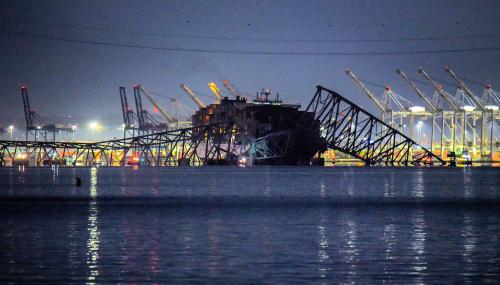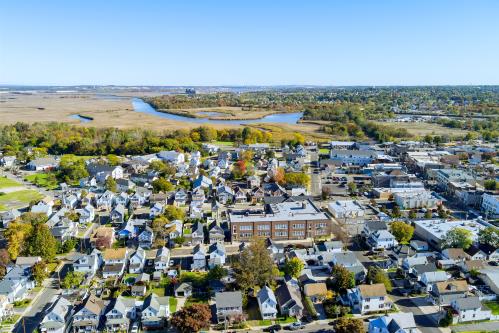The prospect of a coronavirus-induced recession is becoming more and more likely. Disruptions in global supply chains, travel, and overall productivity stemming from COVID-19’s spread may very well end a record run of economic growth in the United States. In response, the Federal Reserve has slashed interest rates, and the White House and Congress are debating fiscal stimulus measures to stave off sharp drops in demand.
While the national economy and labor market have expanded fairly consistently since around 2010, the Brookings Metro Monitor shows that some regions of the country have benefited more than others. In our last post, we showed that very large metro areas—those with at least 1 million people—outpaced others on growth, prosperity, and inclusion between 2008 and 2018.
As the shadow of a recession approaches, there are a couple reasons to assess which U.S. metro areas made the most of the expansion until now. First, the places that best achieved broad-based economic growth and narrowed gaps in race and geography may indicate which attributes of local economies best position them for success in the next round of economic growth. And second, research suggests that more inclusive regional economies may be more resilient to economic downturns than others.
No metro area made progress on all Metro Monitor indicators, but a few rose above the rest
Metro Monitor 2020 measures the economic performance of the nation’s 192 metro areas (those with populations of at least 250,000) across five dimensions—growth, prosperity, overall inclusion, racial inclusion, and geographic inclusion—each of which is composed of three underlying indicators. We use these indicators to score and rank metropolitan performance within three size categories (over 1 million; 500,000 to 999,999; and 250,000 to 499,999). We also use the 15 individual indicators to assess whether each metro area made positive progress in that regard, with rising outcomes in growth, prosperity, and inclusion (except relative poverty rate, which should decline), and narrowed inclusion gaps by race and geography.
Overall, despite a record run of national economic growth, no metro area made progress on all 15 Metro Monitor indicators from 2008 to 2018. Nearly all metro areas had higher average annual wages (adjusted for inflation) in 2018 than 2008, led by a 45% increase in the Silicon Valley area. This most limiting factor across all indicators was entrepreneurship, which we measure by the change in jobs at young (five or fewer years old) firms. Only 18 of the 192 metro areas (9%) saw this indicator rise from 2008 to 2018, with declines reaching as deep as 43%, in Charleston, W.V. This reflects a longer-run structural decline in economic dynamism in the United States, as chronicled by the Economic Innovation Group and others.

Despite limited inroads in entrepreneurship, a handful of metropolitan areas achieved positive progress on the majority of Metro Monitor indicators from 2008 to 2018. Two—San Antonio and Vallejo, Calif.—made progress on 14 of 15 indicators. Vallejo experienced a sharp decrease in the entrepreneurship category, but did well in every other regard and generally ranked among the top third of midsized metro areas on each indicator. San Antonio gained jobs at young firms, but faltered in its overall employment rate, which dropped by about 1 percentage point from 2008 to 2018.
Beyond these two standouts, another 12 metro areas registered progress on 13 of 15 Metro Monitor indicators. Most were in the West and South, including three in Texas (College Station, El Paso, and McAllen), two in Colorado (Boulder and Denver), and two in Washington (Seattle and Spokane). Des Moines, Iowa, Raleigh, N.C., Reno, Nev., and Tulsa, Okla. rounded out this list of strong performers.

These metro areas that achieved more inclusive growth may have benefited from specific positive regional dynamics, such as a vibrant regional economy in Texas (although not all metro areas in Texas were equally successful; see below). Others—such as Boulder, Denver, Raleigh, and Seattle—are at the forefront of a high-technology boom that drove national economic growth over the past decade.
One common attribute across these metro areas is that Latino or Hispanic people account for the majority of their residents of color. It may be that those individuals faced fewer obstacles in the form of segregation, labor market segmentation, and/or racial bias than Black Americans. This would make it more possible for their metro areas to make progress on closing racial/ethnic and spatial economic gaps over the decade.
Very large metro areas overall made more progress than others, potentially enhancing their resilience in a downturn
Inclusive growth was more common in very large metro areas over the past decade than in large or midsized ones. As the previous post in this series explored, this may reflect the increasing value of size in the current era for some aspects of regional economic success.
Very large metro areas were more likely than others to achieve positive progress on at least two-thirds of Metro Monitor indicators from 2008 to 2018. More than 70% registered improvements on 10 or more of the indicators, compared to a little less than 60% of large metro areas, and only 42% of midsized metro areas.

Nearly all very large metro areas achieved increases in output, jobs, wages, and productivity over the decade. Performance in these categories was strong—but a bit spottier—for large and midsized metro areas. Among the nine indicators for inclusion, racial inclusion, and geographic inclusion, very large metro areas registered more consistent progress than midsized metro areas in six of them. In particular, employment outcomes were much more mixed in midsized metro areas, perhaps reflecting a weaker overall job growth trend in those areas.

Midsized metro areas’ struggle to achieve inclusive growth is also apparent in the map of regions that made progress on the fewest Metro Monitor indicators overall. A total of 17 areas improved on six or fewer of the 15 indicators; of these, 10 were midsized metro areas. Several of these were in the Southeast, in locales still battling to recover from industrial decline in prior decades, including Kingsport, Tenn., Montgomery, Ala., Roanoke, Va., and Savannah, Ga. Somewhat larger metro areas in the region—such as Greensboro, N.C., Jacksonville, Fla., and Winston-Salem, N.C.—also ranked among this group.
Stronger progress among larger metro areas toward inclusive growth over the last decade has not yielded genuine economic inclusion, in which the fruits of economic expansion are enjoyed equally by all. In many of the nation’s largest regions, overall wage and employment levels remain lower than they could be, and gaps by race and place are wider than they should be.
Yet patterns of improvement over the past decade suggest that many larger metro areas may have strengthened their ability (relative to smaller places) to weather a coming downturn by using the boom times as a chance to provide more widespread economic opportunity and undergird social cohesion. These are lessons all metro areas in America should heed as we prepare to enter the bust-and-boom cycle once more.






Commentary
As coronavirus fuels a looming recession, which cities achieved inclusive growth in the past decade’s boom?
March 17, 2020